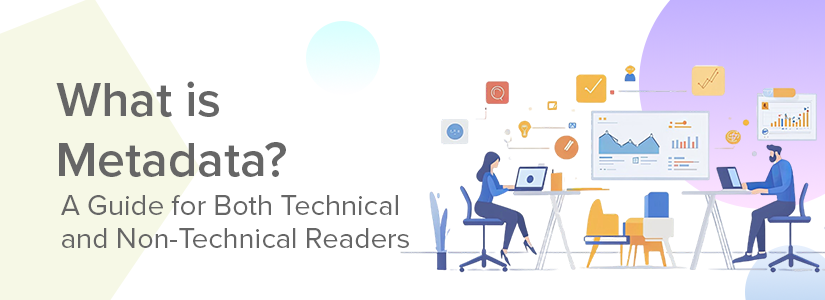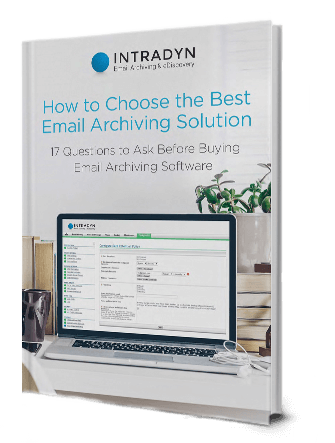What is Metadata? A Guide for Both Technical and Non-Technical Readers

In a world overflowing with digital information, the term “metadata” is often used, but what does it really mean? Simply put, metadata is data about data. It’s the additional information that helps us understand, organize, and make sense of the main content. Whether you’re a technical expert or someone who just wants to understand the basics, this blog will help demystify metadata: what it is, what it contains, who uses it, and how it is generated. We’ll even walk through an example of email metadata to make it more concrete.
What Information Does Metadata Contain?
Metadata includes details that describe other data. Imagine you have a book; metadata would be the information about that book, such as its title, author, publication date, and genre. In the digital realm, metadata works similarly. It provides key information about a piece of data, which can be a file, an image, a document, or an email. Here are some common elements of metadata:
- Title: The name or label of the content.
- Author: The creator or owner of the content.
- Date and Time: When the content was created, modified, or accessed.
- File Size: The size of the digital file.
- Location: Where the data is stored or where it was generated (in terms of geographic coordinates or storage paths).
Types of Metadata
Metadata can be categorized into several types based on its purpose:
- Descriptive Metadata: This includes information like titles, authors, and keywords, which helps identify and discover data.
- Structural Metadata: This type provides information on how data is organized, such as how pages are ordered in a book or how files are structured within a folder.
- Administrative Metadata: This includes technical details like file type, creation date, and access permissions, which help manage data.
How is Metadata Generated?
Metadata can be generated automatically or manually:
- Automatically Generated: Most metadata is created by the systems and software we use. For example, when you take a picture with your smartphone, information like the time, date, camera settings, and even the location where the photo was taken are automatically recorded as metadata.
- Manually Created: Sometimes, metadata is manually added to provide more details. For example, a content creator might add tags or categories to a blog post, which helps readers find related articles.
Practical Examples of Metadata in Everyday Life
Metadata is all around us, even if we don’t always notice it. Here are some common examples:
- Music Files: Metadata like the artist’s name, album title, and genre helps you organize and search for songs in your music library.
- Videos on Streaming Platforms: Metadata tags like genres, actors, and release dates help suggest videos you might enjoy.
- Digital Photos: When you take a photo, metadata like the date, time, location, and camera settings are saved, making it easier to organize and find specific pictures later.
Who Uses Metadata?
Metadata is used by a wide range of people and systems for different purposes. Here are some key users:
- Search Engines: When you search for something online, search engines use metadata from web pages to deliver the most relevant results.
- Law Enforcement and Compliance: Metadata plays a critical role in investigations. It helps track the origin and history of digital communication, providing essential context.
- Organizations: Companies rely on metadata for organizing and managing data. For instance, marketing teams use metadata to classify customer data, while IT teams use it for data security and auditing.
- Individuals: You use metadata more often than you think. When searching for photos on your phone, metadata helps you find pictures taken on a specific date or at a particular location.
Metadata and Privacy Concerns
While metadata is incredibly useful, it also raises privacy concerns. Metadata can reveal a lot about a person’s habits, location, and interactions. Here are some key points about metadata and privacy:
- Tracking Users: Metadata can be used to track users’ activities, such as where and when a photo was taken.
- Digital Footprint: Every email, social media post, or file shared online contains metadata, contributing to your digital footprint.
- Protecting Metadata: To protect your privacy, you can remove metadata from files before sharing them. For instance, many photo editing tools allow you to strip location data from images.
Example: Email Metadata
To make this concept clearer, let’s consider email metadata. When you send an email, there’s more information than just the content you type in the message box. The metadata in an email can include:
- Sender and Recipient: Who sent the email and who received it.
- Timestamp: When the email was sent and when it was received.
- Subject Line: The topic or subject of the email.
- IP Addresses: Information about where the email originated from (in terms of the IP address of the sender).
- Message ID: A unique identifier for each email, which helps systems track and organize messages.
This metadata helps email systems route your message correctly and allows email clients to display it properly in your inbox. It also serves other purposes, like filtering spam and aiding in legal investigations. For example, if law enforcement is investigating an email-related crime, metadata like IP addresses and timestamps can provide crucial clues about when and where the email was sent.
Metadata in Business and Analytics
Businesses rely heavily on metadata to make informed decisions and manage data efficiently. Here are some examples of how metadata is used in business:
- Customer Insights: Metadata helps companies understand customer behavior, such as browsing history or purchase patterns, allowing them to tailor marketing strategies.
- Data Governance: Metadata is essential for data management and compliance. It ensures that data is correctly classified, stored, and accessed according to regulations, which is crucial for industries like finance and healthcare.
Tools and Technologies for Managing Metadata
Managing metadata effectively requires specialized tools. Here are some common tools and technologies used for metadata management:
- Metadata Management Software: Tools like Collibra and Alation help organizations manage, catalog, and govern metadata across different systems.
- Database Systems: Metadata helps databases index and query data more efficiently, making it easier for users to search and retrieve information.
Why is Metadata Important?
Metadata plays a critical role in helping us navigate the vast sea of digital information. It enhances searchability, facilitates organization, and provides context for understanding data. Without metadata, it would be difficult to efficiently locate and use information. Imagine trying to find a specific document on your computer without being able to search by the title or date—it would be overwhelming.
Final Thoughts
Metadata might seem like a technical term, but its impact on our daily lives is significant. From organizing photos to enabling complex data analysis, metadata makes our digital experiences smoother and more efficient. Whether you’re a professional looking to understand data management or someone curious about how their devices work, understanding metadata gives you insight into the hidden details that keep our digital world running smoothly.
Next time you send an email, take a picture, or save a file, remember—there’s more happening beneath the surface, thanks to metadata. Check out Intradyn Archiver to see how it captures and uses the metadata to find the information you need.

